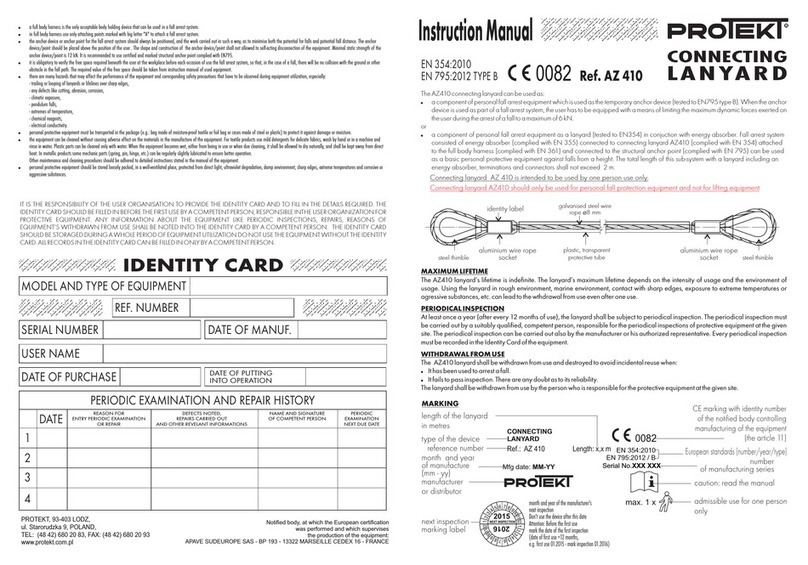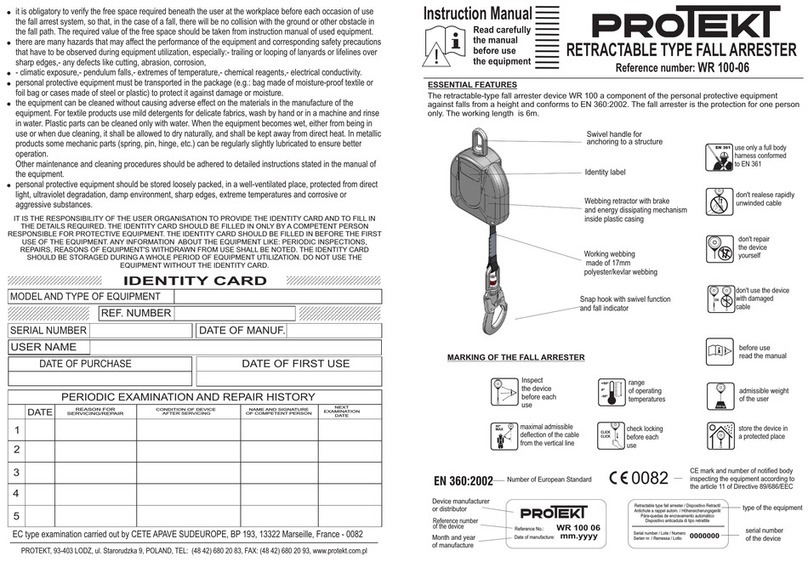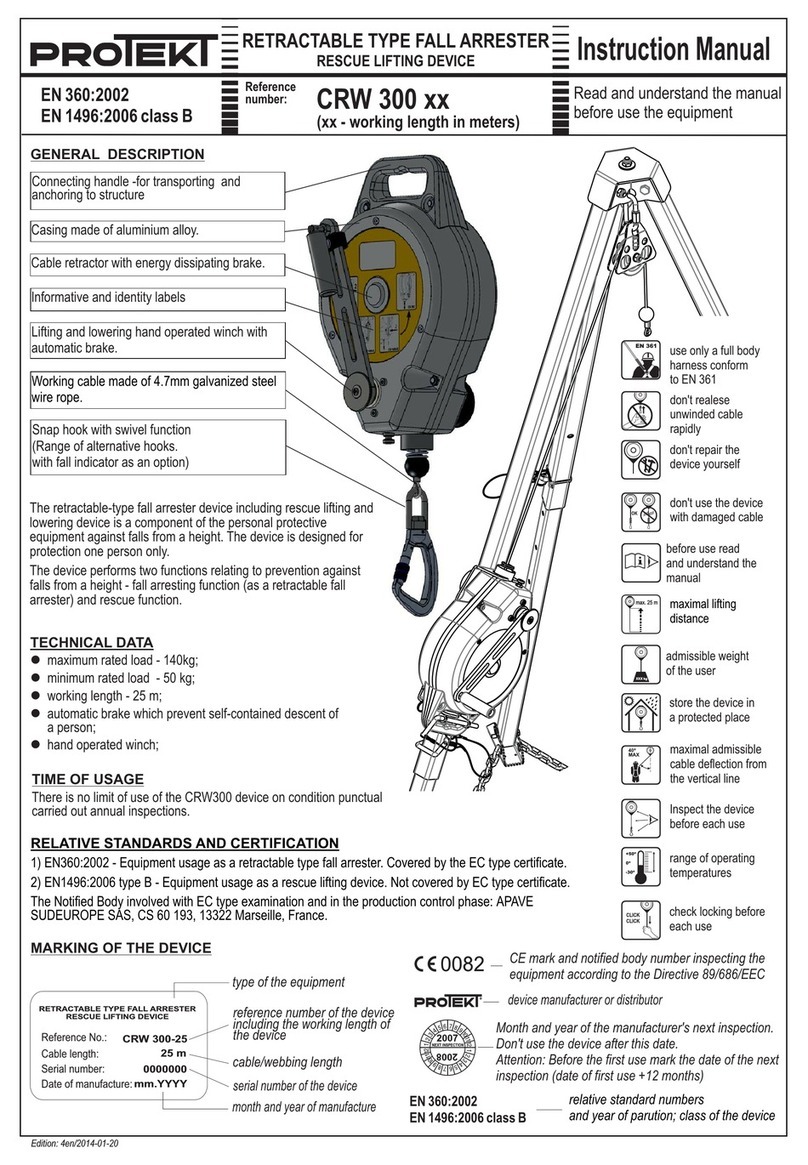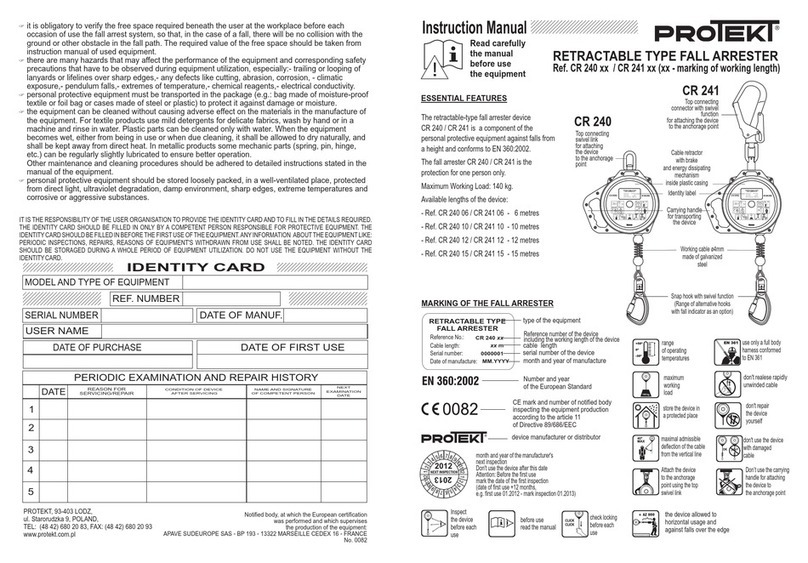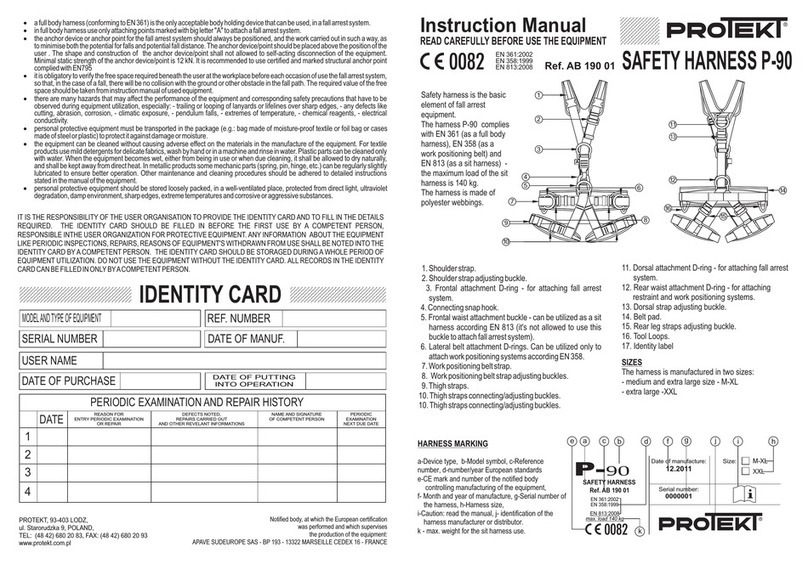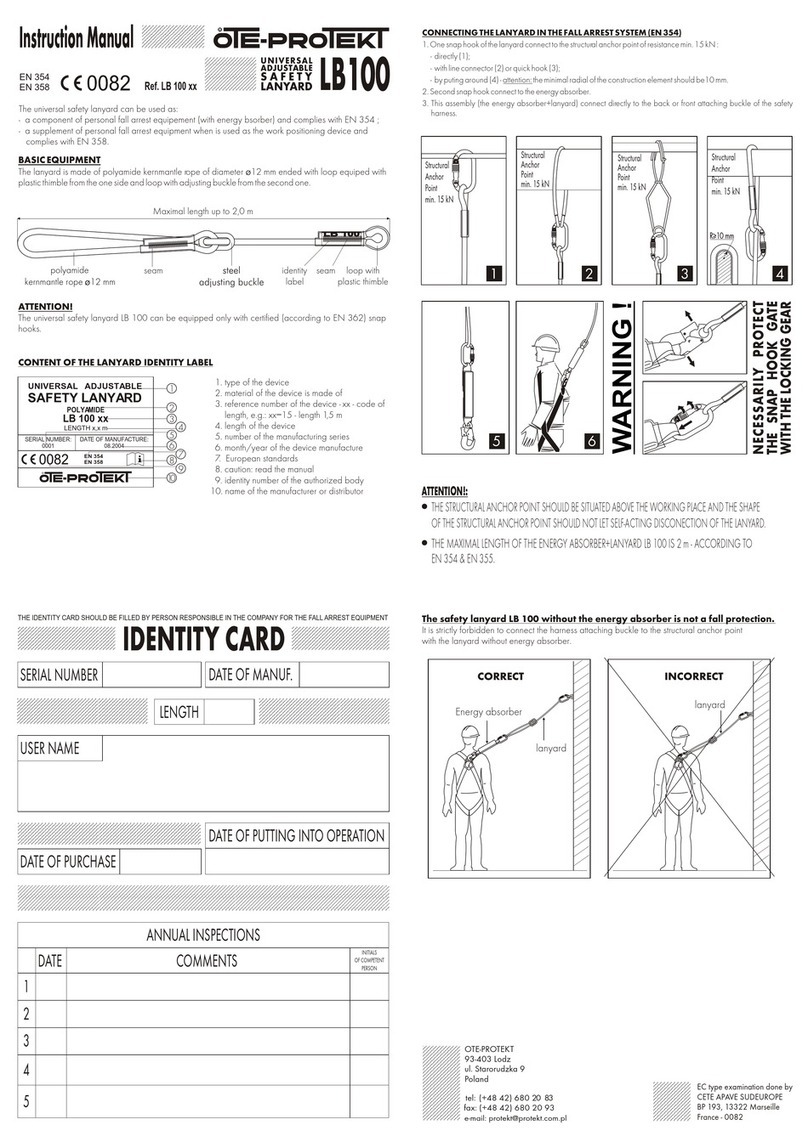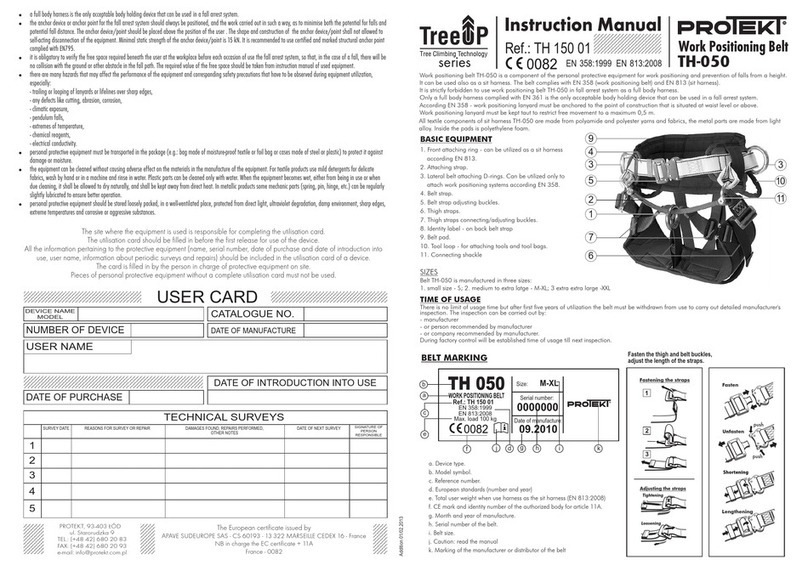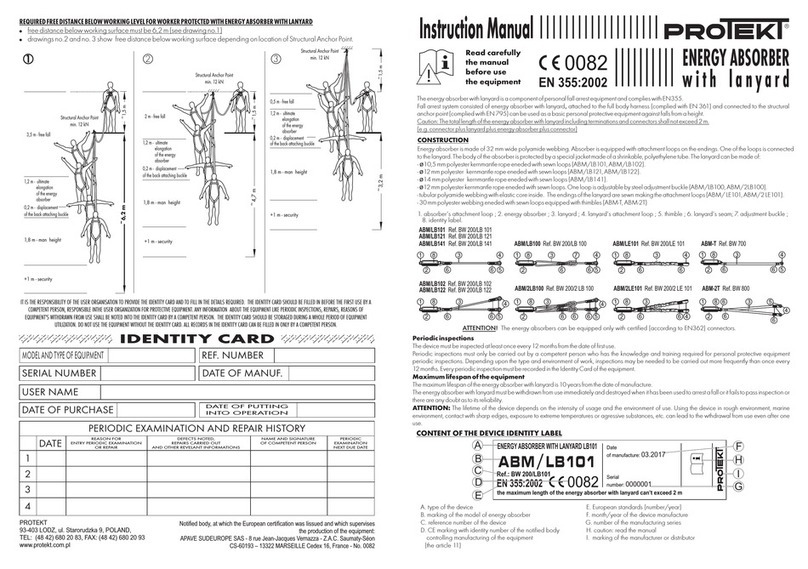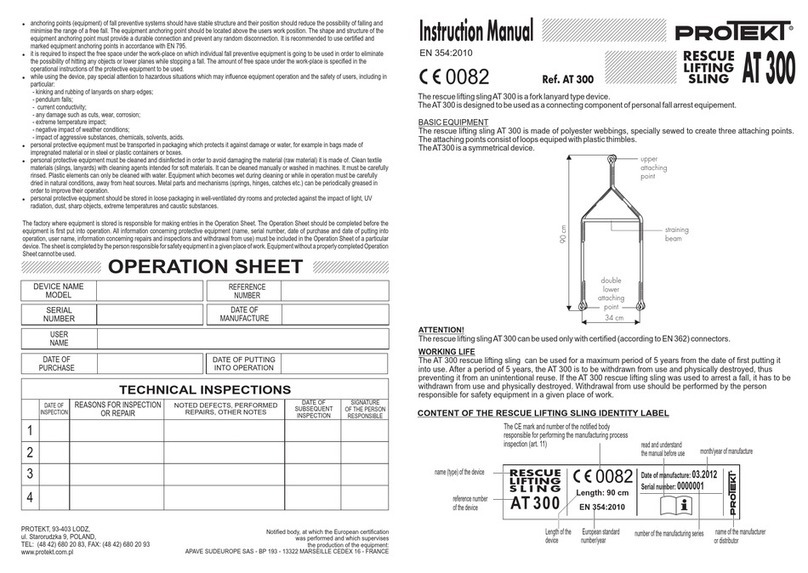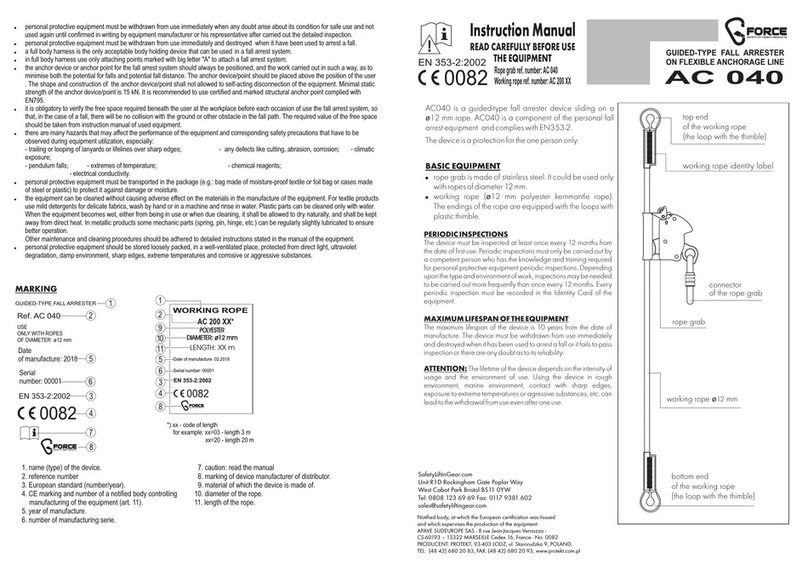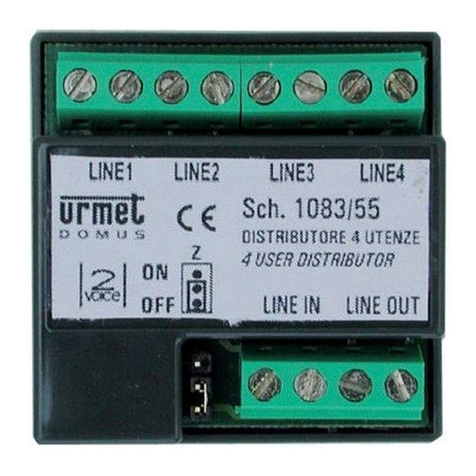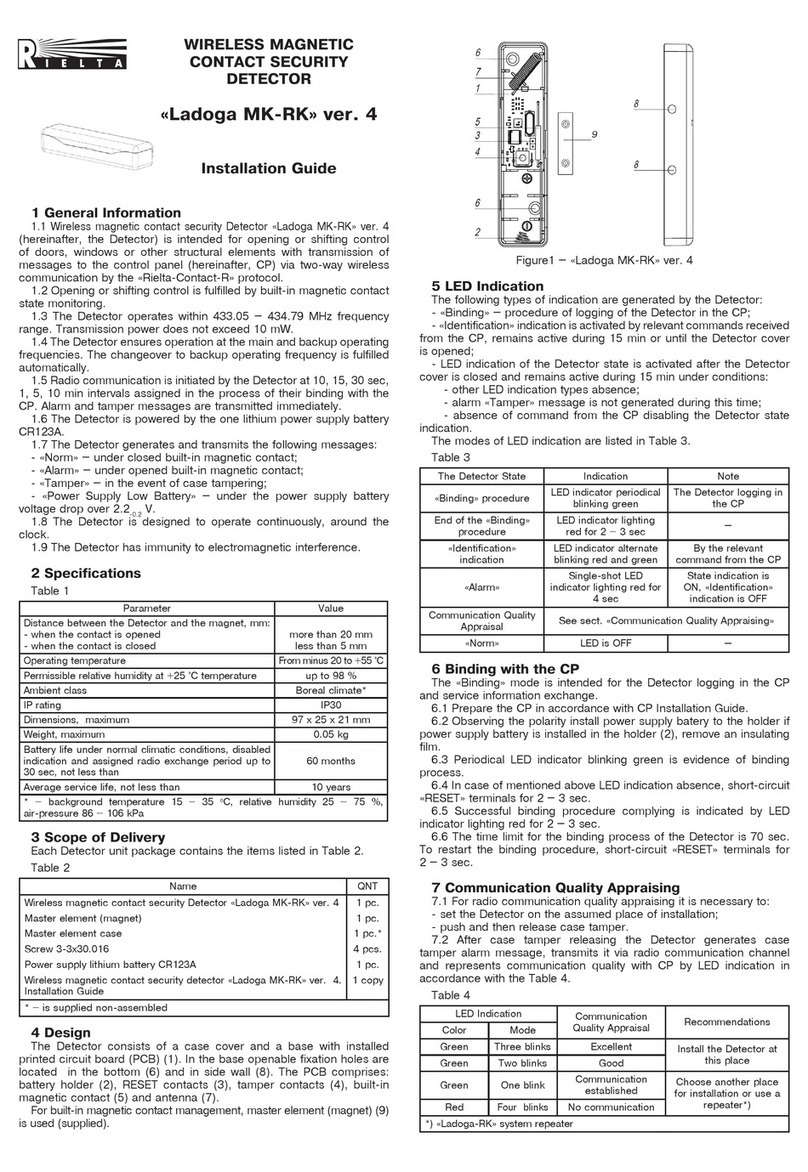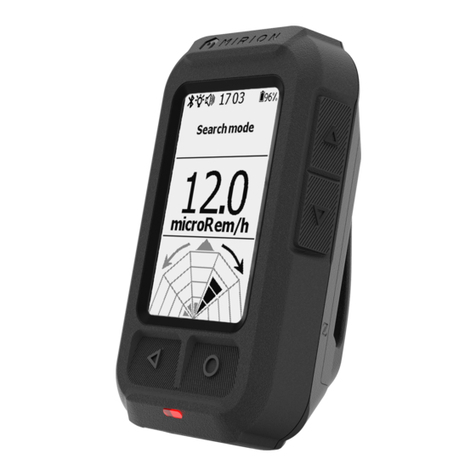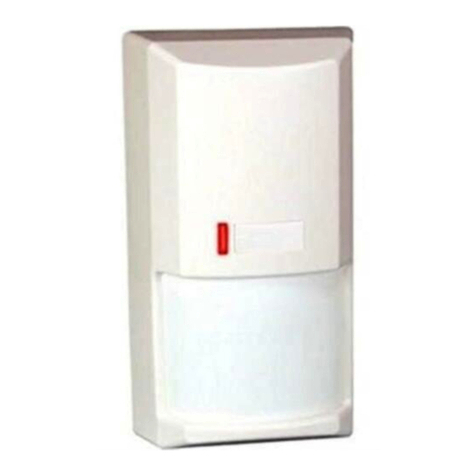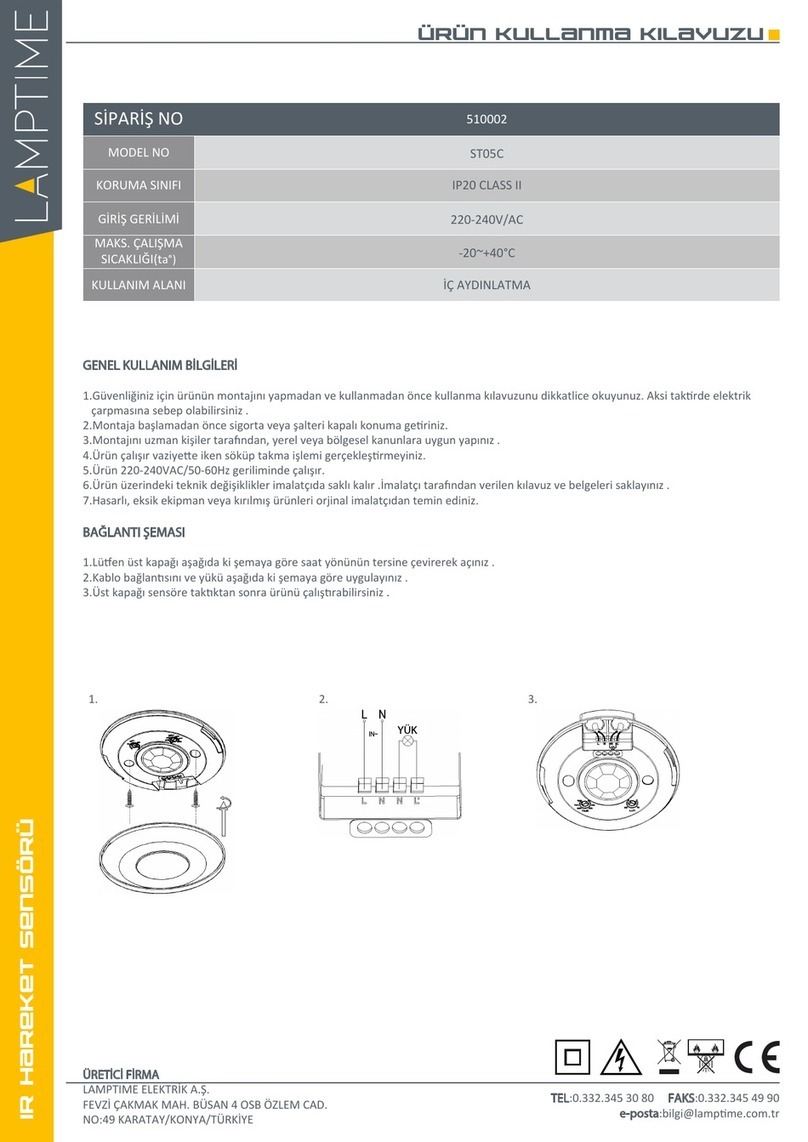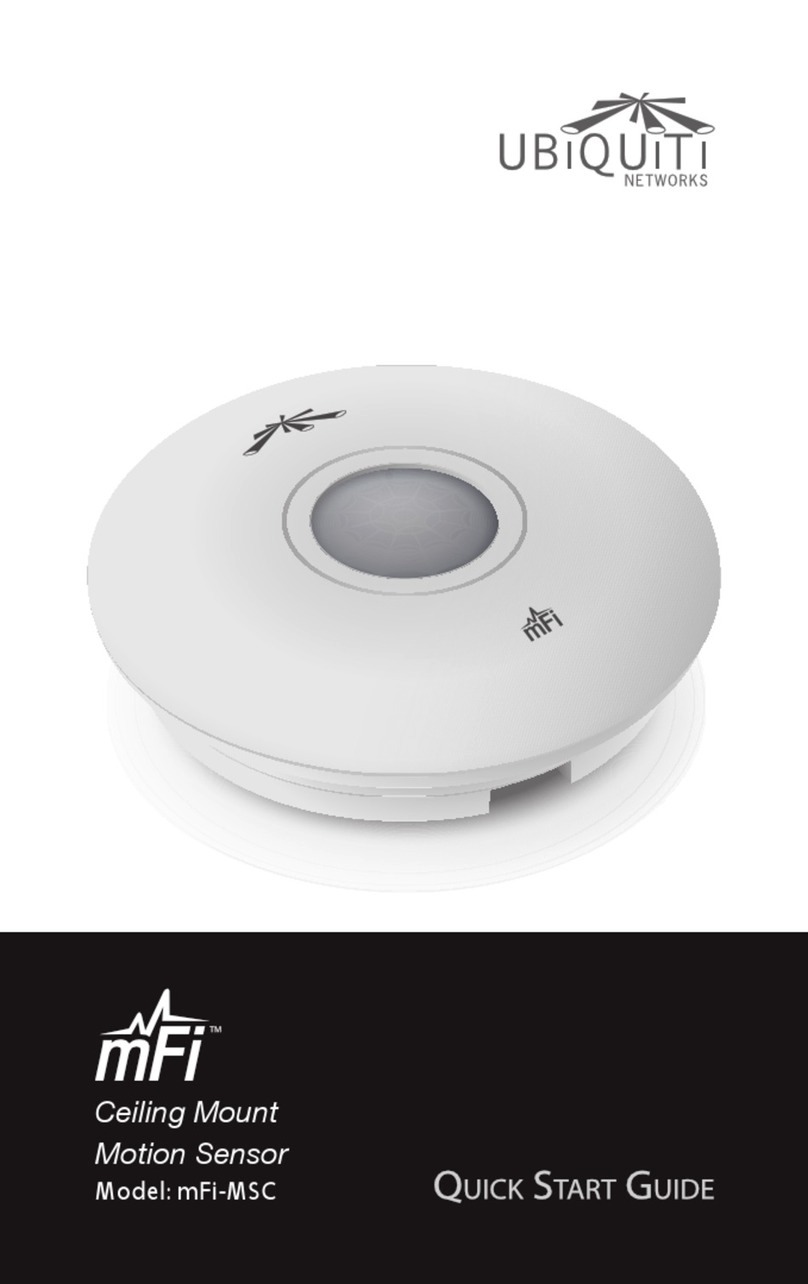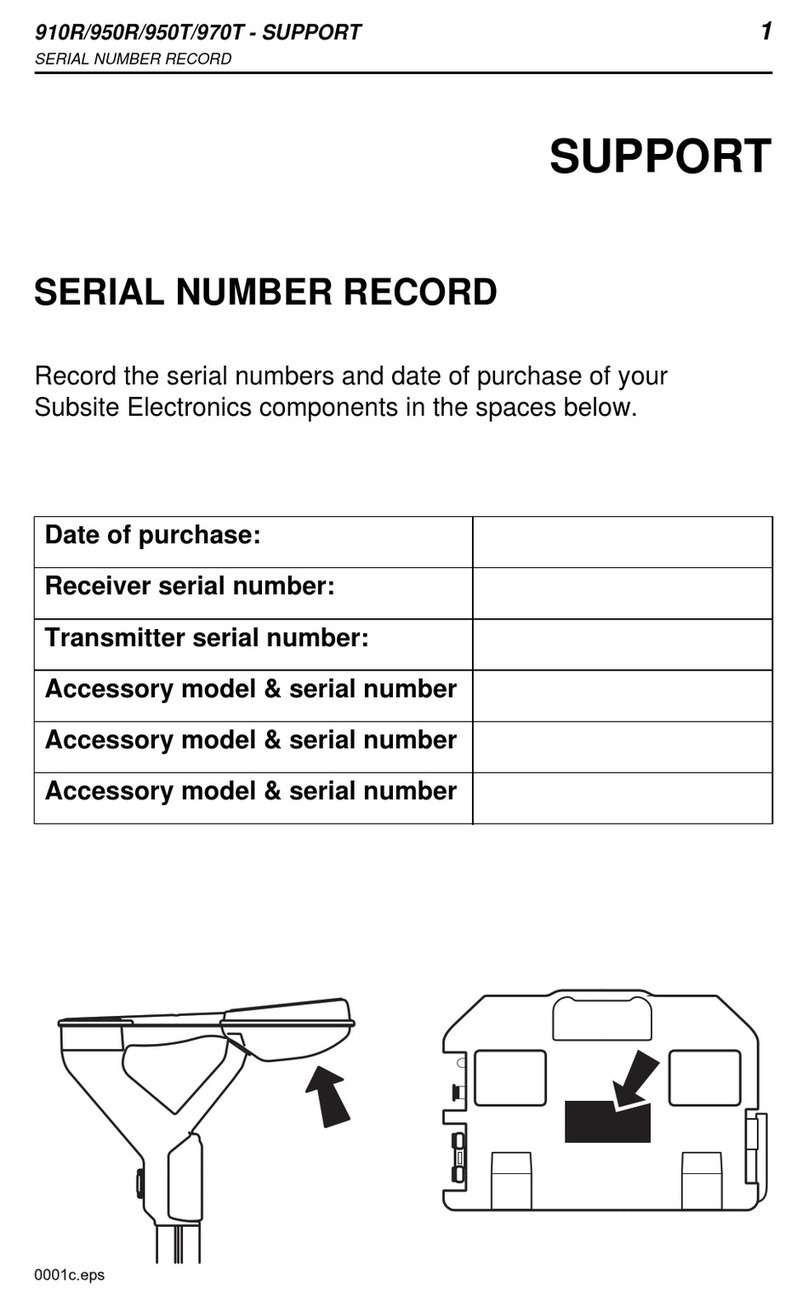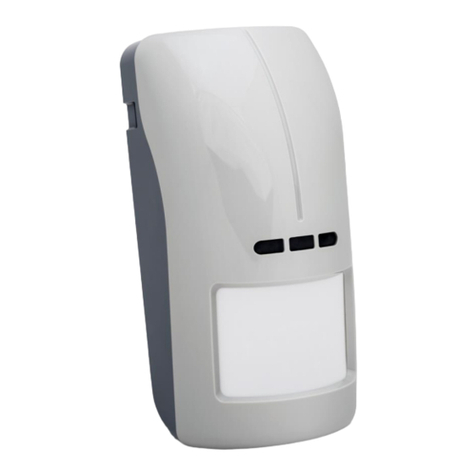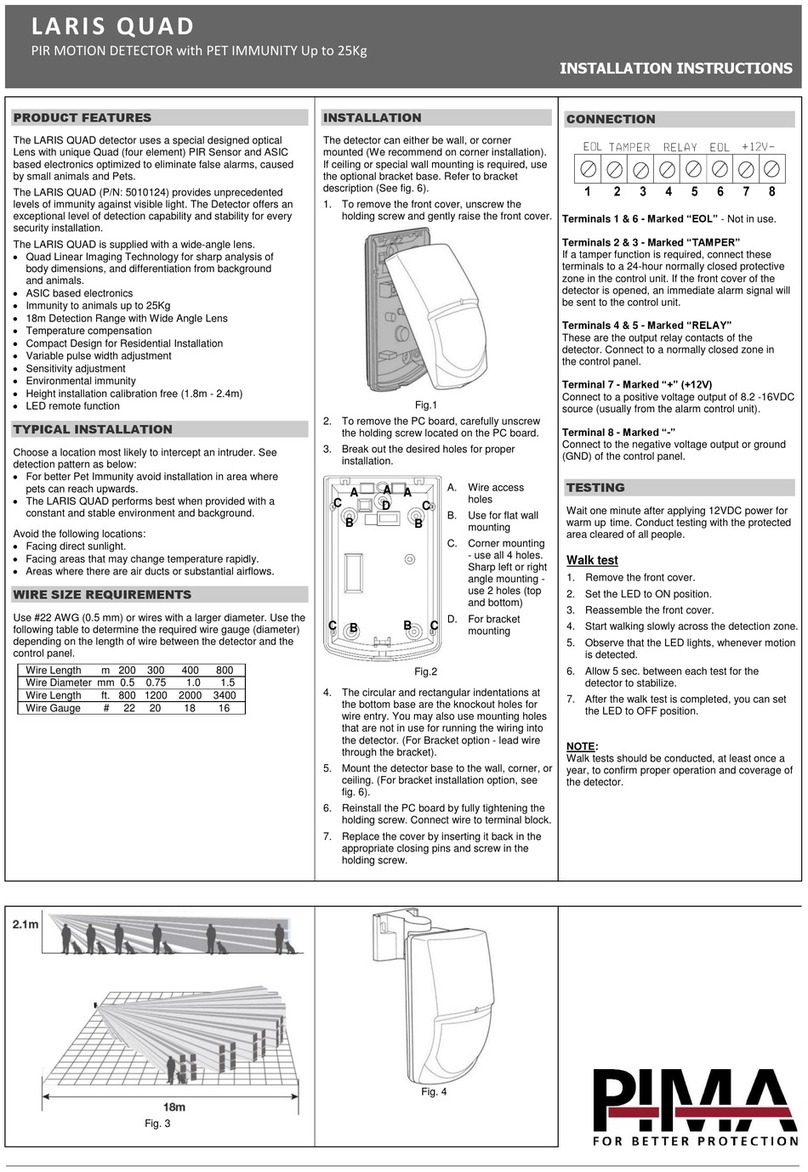
Work positioning rope can be attached only to the side buckles of the work positioning belt.
According to the EN 358 the work positioning rope should be tied around the construction element at the operator's waist height or above. The length and tensioning of the rope
should be selected to reduce the free-fall distance to not more than 0.5 m.
NOTE:
1. Never attach the connecting and energy-absorbing component to the side buckles of the work positioning belt.
2. Never attach the work positioning device to the chest attachment loop.
Before each use of the fall arresting equipment, which is a component of the safety harness, make sure that all devices are properly attached to each other and work together
without any interference, and whether they comply with the following standards:
- EN 354, EN 355, EN 353-1, EN 353-2, EN 360, EN 362 - connecting and energy-absorbing component,
- EN 795 – equipment anchoring points (fixed structure points),
- EN 341 – evacuation equipment;
- EN 358 – work positioning equipment
The selected connecting and energy-absorbing component can be attached only to the harness's attachment elements marked with capital “A”.
The connecting and energy-absorbing component can be attached only:
- directly to the rear attachment buckle (1),
or
- to the extension piece of the rear buckle (2),
or
- to both loops of the chest attachment point at the same time (3). It is prohibited to attach fall protection equipment to a single loop of the chest attachment point!
The rear buckle is marked with letter “A” placed on the dorsal anchorage point with arrows indicating the buckle.
The back buckle extension element is marked with the letter “A” on the label inside the element's loop.
The loops of the chest attachment point are marked with letter “A” (half of the letter is blackened and half is contoured) located on a label located inside each loop of the chest
attachment point.
See the figures below.
ATTACHING THE CONNECTING AND ENERGY-ABSORBING COMPONENT
The harness is put on correctly, if:
the user can insert his/her hand between the individual straps of the harness and clothing;
back attachment buckle is on at the height of the shoulder blades;
chest strap is located at the centre of the chest;
free ends of the straps are protected with loops and adhere to the harness.
1 2 3
ATTACHING THE WORK POSITIONING ROPE
HOW TO PUT ON THE HARNESS
10 11
89
7
Fastening the straps
Adjusting the length of the straps
Shortening Extending
2 3
5 6
Fasten the front buckle and adjust
the tightness of the chest strap.
Check the clips of the
straps and the buckles' fastening.
Free endings of the belt must be
protected with plastic loops/trimming.
The rear buckle should be at
the height of the shoulder blades.
3a
Fasten the buckle and adjust
the strap of the work positioning belt.
5a 6a
Put through the first thigh strap,
next another strap in the crotch.
Be careful to avoid tangling them.
Work "positioning" belt must be at the waist height.
Buckles must be arranged symmetrically on both sides.
Lift the harness by the
rear attachment buckle.
Put on shoulder straps – one by one.
Be careful to avoid tangling them.
13 14
Adjusting the length of the shoulder straps
Unfastening the straps
Shortening Extending
·personal protective equipment shall only be used by a person trained and competent in its safe use.
·personal protective equipment must not be used by a person with medical condition that could affect the safety of the equipment user in normal and
emergency use.
·a rescue plan shall be in place to deal with any emergencies that could arise during the work.
·being suspended in PPE (e.g. arresting a fall), beware of suspension trauma symptoms.
·to avoid symptoms of suspention trauma, be sure that the proper rescue plan is ready for use. It is recommended to use foot straps.
·it is forbidden to make any alterations or additions to the equipment without the manufacturer's prior written consent.
·any repair shall only be carried out by equipment manufacturer or his certified representative.
·personal protective equipment shall not be used outside its limitations, or for any purpose other than that for which it is intended.
·personal protective equipment should be a personal issue item.
·before use ensure about the compatibility of items of equipment assembled into a fall arrest system. Periodically check connecting and adjusting of the
equipment components to avoid accidental loosening or disconnecting of the components.
·it is forbidden to use combinations of items of equipment in which the safe function of any one item is affected by or interferes with the safe function of
another.
·before each use of personal protective equipment it is obligatory to carry out a pre-use check of the equipment, to ensure that it is in a serviceable
condition and operates correctly before it is used.
·during pre-use check it is necessary to inspect all elements of the equipment in respect of any damages, excessive wear, corrosion, abrasion, cutting or
incorrect acting, especially take into consideration:
- in full body harnesses and belts - buckles, adjusting elements, attaching points, webbings, seams, loops;
- in energy absorbers - attaching loops, webbing, seams, casing, connectors;
- in textile lanyards or lifelines or guidelines - rope, loops, thimbles, connectors, adjusting element, splices;
- in steel lanyards or lifelines or guidelines - cable, wires, clips, ferrules, loops, thimbles, connectors, adjusting elements;
- in retractable fall arresters - cable or webbing, retractor and brake proper acting, casing, energy absorber, connector;
- in guided type fall arresters - body of the fall arrester, sliding function, locking gear acting, rivets and screws, connector, energy absorber;
- in connectors - main body, rivets, gate, locking gear acting.
·after every12 months of utilization, personal protective equipment must be withdrawn from use to carry out periodical detailed inspection. The periodic
inspection must be carried out by a competent person for periodic inspection. The periodic inspection can be carried out also by the manufacturer or his
authorized representative.
·In case of some types of the complex equipment e.g. some types of retractable fall arresters the annual inspection can be carried out only by the
manufacturer or his authorized representative.
·regular periodic inspections are the essential for equipment maintenance and the safety of the users which depends upon the continued efficiency and
durability of the equipment.
·during periodic inspection it is necessary to check the legibility of the equipment marking.
·it is essential for the safety of the user that if the product is re-sold outside the original country of destination the reseller shall provide instructions for use,
for maintenance, for periodic examination and for repair in language of the country in which the product is to be used.
·personal protective equipment must be withdrawn from use immediately when any doubt arise about its condition for safe use and not used again until
confirmed in writing by equipment manufacturer or his representative after carried out the detailed inspection.
·personal protective equipment must be withdrawn from use immediately and destroyed (or another procedures shall be introduced according detailed
instruction from equipment manual) when it have been used to arrest a fall.
THE ESSENTIAL PRINCIPLES FOR USERS OF PERSONAL PROTECTIVE EQUIPMENT AGAINST FALLS FROM A HEIGHT
